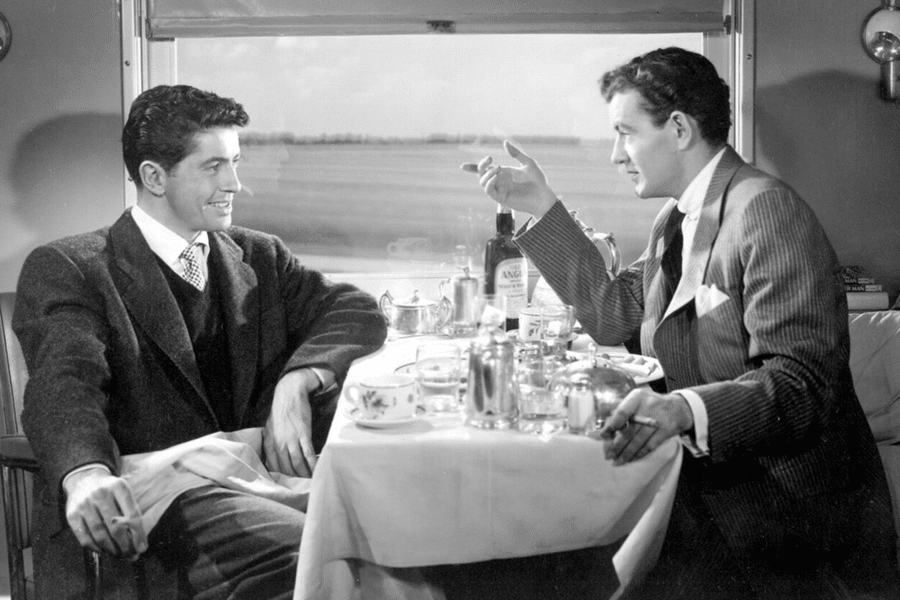
Vehicles of Suspense
The modes of transportation become more than mere vehicles in suspense fiction – they transform into critical components of high-stakes narratives. While many stories feature the usual suspects of cars and trains, a delve into this genre reveals a trove of unusual modes of transportation, each adding a unique twist to the thrilling chase scenes and nail-biting escapes.
Consider the classic “Strangers on a Train” by Patricia Highsmith, adapted into a film by Alfred Hitchcock. Here, a seemingly innocuous train journey sets the stage for a tale of murder and intrigue. The train, an everyday mode of transport, becomes a pivotal element in the story, showcasing how common vehicles in unexpected contexts can heighten suspense.
In the world of television, “Sherlock,” a modern adaptation of Arthur Conan Doyle’s stories, brings innovative transportation into play. In one memorable episode, Sherlock Holmes and Dr. Watson navigate the streets of London on a motorbike, weaving through traffic to evade capture. The choice of a motorbike in the dense urban landscape adds an edge to the chase, demonstrating agility and speed in ways a car chase could not.
Another novel that deftly uses transportation to build suspense is “The Day of the Jackal” by Frederick Forsyth. The protagonist’s escape in a custom-built car, capable of being disguised and rebuilt, adds a layer of complexity to the narrative. This vehicle is not just a means of escape but also a tool for evasion and disguise, integral to the Jackal’s identity as a chameleon-like assassin.
Diving into the realm of air travel, “The Bourne Identity” by Robert Ludlum, and its subsequent film adaptations, introduce an exhilarating helicopter chase. The aerial pursuit adds a three-dimensional dynamic to the chase, expanding the action beyond the constraints of land-based pursuits and showcasing the protagonist’s resourcefulness in extreme situations.
Waterways too find their place in suspense fiction. In “Live and Let Die,” part of Ian Fleming’s James Bond series, a high-speed boat chase through the swamps adds an element of unpredictability and danger. The swamp’s labyrinthine waterways provide a stark contrast to the usual open-water chases, introducing environmental hazards that add to the suspense.
In “The Taking of Pelham 123,” both the novel by John Godey and its film adaptations, a New York City subway train becomes the center of a hostage situation. Here, the subway, a symbol of urban routine, turns into a claustrophobic and dangerous trap, highlighting how ordinary public transportation can become an extraordinary setting for suspense.
The imaginative use of transportation in suspense fiction serves to enhance the narrative’s tension and unpredictability. Whether it’s a high-speed chase through city streets, a tense journey on a public train, or a daring escape on a motorbike, these modes of transport become integral to the story’s fabric, transforming from mere settings into characters in their own right.
Moreover, these unusual transportation choices often reflect the characters’ personalities and the story’s theme. A sleek sports car might symbolize a character’s desire for speed and risk-taking, while a rickety boat could represent the precarious nature of the protagonist’s journey.
The integration of unique transportation modes also allows authors and filmmakers to explore different aspects of their characters. For example, a character’s ability to pilot a helicopter or navigate a speedboat in treacherous conditions can reveal skills and traits that might not be apparent in more conventional settings.
Furthermore, the choice of transportation can significantly impact the story’s pacing. A high-speed chase in a sports car offers a different tempo and intensity compared to a suspenseful pursuit in a crowded subway train. These choices directly affect the reader’s or viewer’s experience, keeping them on the edge of their seat as they follow the protagonists’ journey.
The use of unusual transportation modes in suspense fiction not only adds an element of surprise but also allows for creative storytelling. It provides authors and filmmakers with the opportunity to break away from clichés and present their narratives in fresh and engaging ways. Whether it’s through a chase across the rooftops of a bustling city or a stealthy escape in a submarine, these modes of transport bring a unique flavor to the genre, making each story a memorable ride.
In summary, the use of unusual modes of transportation in suspense fiction plays a pivotal role in shaping narratives, character development, and maintaining the genre’s quintessential edge-of-the-seat suspense. From trains and motorbikes to helicopters and boats, these vehicles do more than transport characters from one point to another; they drive the story forward, adding layers of complexity and excitement to the thrilling world of suspense fiction.
More Suspense Features
Is It Suspense?
How you know a suspense story for what it is
Unreliable Narrators in Suspense
The most enthralling mysteries are those that lie within us
Suspense Themes
What are some of the common themes of suspense?



